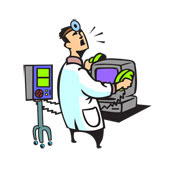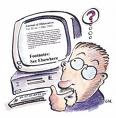arthur@glazerthepctech.com
Windows 7 was released in beta or trial form a few months ago. That bug-laden form, although free of cost, was free of support as well. It is the nature of the beast with betas.
As Microsoft works out the kinks from this soon-to-be-finished operating system, they are allowing us to not only preview the latest incarnation, but to use it free for a year. Yes, free Microsoft. This is not a typo.
Windows 7 RC, for Release Candidate, is an upgrade of the beta version and is now available as a download from its Web site. As with the beta version, all you need to do is register. It will scan your computer to see if it is capable of running Win 7 and issue an installation key if it is. You will get an iso-type file which you’ll need to burn to a disc. You’ll then boot from this disc to install the operating system.
It will be good for a year from now and will cease to function on June 1, 2010. Two months prior to that, it will begin to remind you it is only a trial version. How, you ask? It will turn itself off every two hours until you buy it or delete it. Annoying, yes. Now that’s the Microsoft we know.
You only have through the end of June to register with Microsoft and download your copy of Windows 7 RC. Windows 7 the finished product, is scheduled to officially go on sale sometime during the winter holiday season.
This is unprecedented by Microsoft, or any other manufacturer, to my knowledge. It gives us an opportunity to really see if Win 7 is any better than its predecessors. We have plenty of time to test it, and it’s free.
Although not a total overhaul (it is written on the same kernel or foundation as XP & Vista), Microsoft claims there are to be some major changes, many we are supposed to like.
If you don’t have an extra or old computer kicking around the garage, you could alternatively set up your current one to dual boot to Vista and Win 7 or XP and Win 7. By dual boot, I mean that two operating systems installed on one computer. When the computer boots up, you will have a boot manager to offer you a choice of which operating system to boot into. There is some prep work involved plus the addition of the second OS, but it’s not that time consuming.
Now this is not for the weak of heart, but it’s really not all that difficult, either. Just be sure that you clone, image or otherwise back up your current system before you begin on this adventure. Back up to an external drive or to DVDs to be safe.
There are lots of articles and forums on the Internet that deal with this. Microsoft’s Web site may be the first place you run to for support, but others are easier to comprehend. Would you rather take instructions from the guys who developed the operating system, or from guys who tried to install it, made mistakes, took notes and now know the pitfalls?
Get the OS at www.microsoft.com/Windows/Windows-7/download.aspx and then check out lifehacker.com/5126781/ for simple instructions or read more at www.gadgetpaper.com/how-to-install-windows-7-rc-as-a-dual-boot-over-vista-or-from-scratch. Or Google,"dual boot Windows 7 RC" for more options.
You will need a partition utility to have a dual-boot system. Your hard drive will need to be split up, or partitioned to make room for what’s to come. Get a free copy of Gparted, at gparted.sourceforge.net/download.php. You could also use Partition-it if you own it, or others.
Be sure you follow directions carefully, taking no shortcuts. You may end up with a doorstop if you decide to get creative.
A dual-boot system is good for many reasons. My laptop is configured as a dual boot with XP and Vista. Until I am totally comfortable with Vista (should that day ever come), I use XP as my main OS and play around with Vista. I do the same on another system with XP and Win 7. Ultimately I assume, I’ll switch to Win 7. Should something happen to one OS, I could always access its files from the other. It makes for a versatile computer.
Dual-booting with this generous offer from Microsoft will give us a chance to really test drive Windows 7, side by side with whichever one we use now. By the time we are forced to make a decision, we will either like it and buy it, or stick with what we have. But at least it will be an informed first-hand decision.
Arthur Glazer is a freelance writer and computer technician in Gainesville. His column appears biweekly. Arthur welcomes your computer questions and ideas for future columns.











